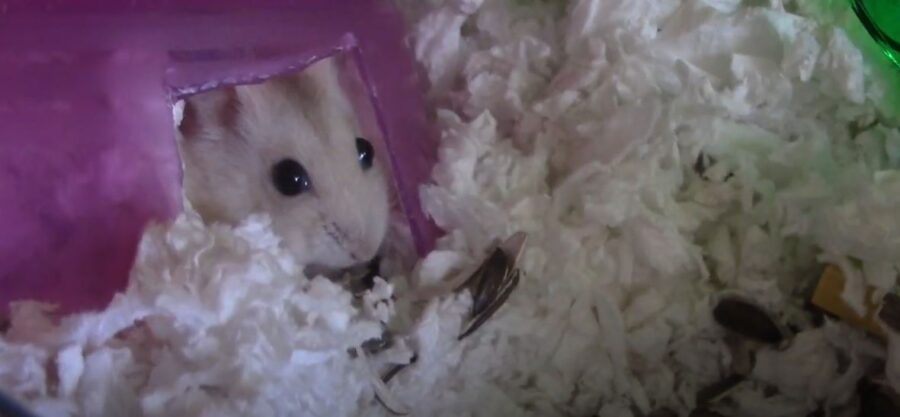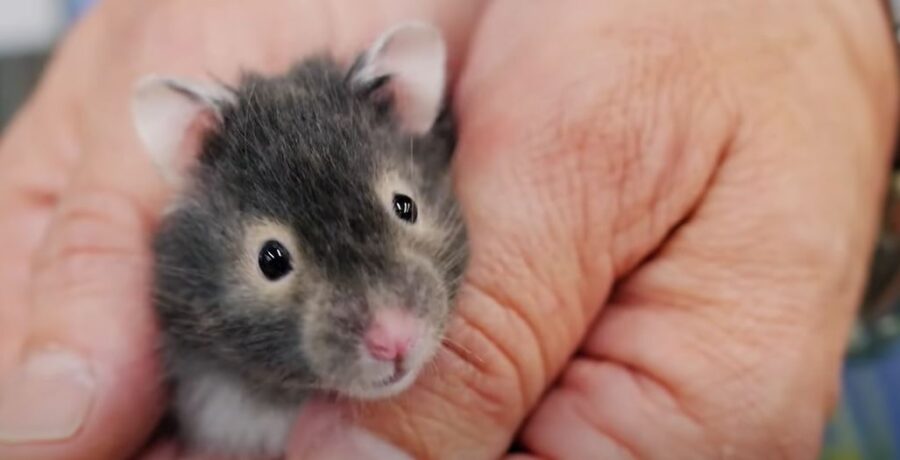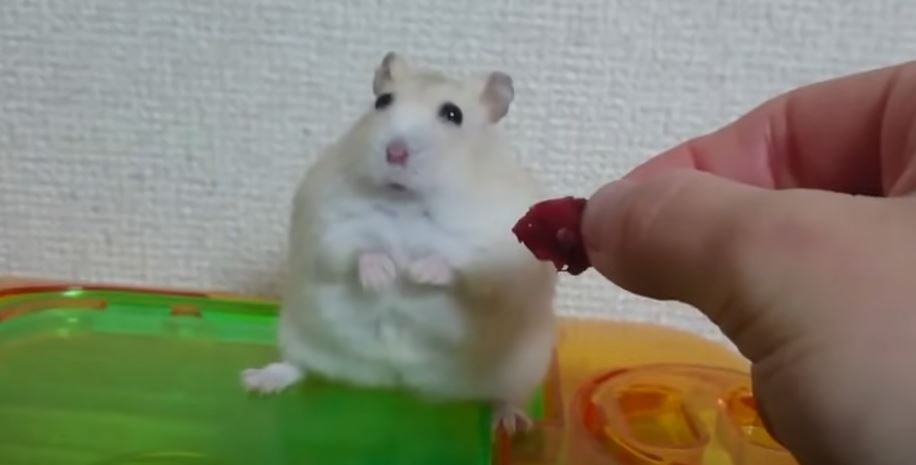I wonder what my hamster thinks about me. Do Hamsters have feelings? Do they know how we are feeling?
This is such a broad topic that is open to interpretation. Although studies continue to provide us with hope, it is hard to get into the minds of our rodent companions.
In this article, we will discover what there is to learn about hamster feelings and find out how close we can identify with their moods.
Do Hamsters Have Feelings?
Feelings, emotions and mood are human terms that we can apply to our rodent companions. Sure, hamsters can feel stress, joy, comfort and relaxation in many situations that may or may not have anything to do with us.
It is our duty or desire to give these hamsters the best outlook on life through interaction with us, healthy meals, enclosures and overall comfortable environments set up for them.
Hamsters have feelings for owners even if they are solitary rodents who do not need to be paired or socialized in groups. They will learn to respond to you, bond with you in subtle forms of trust and express feelings of excitement, happiness or joy in positive states.

Does My Hamster Know When I Feel Sad?
There are moments when I’m not my best self. My pocket pet companions are there for me when I need them. Is it just me or do I sense that my hamster knows that I need to be cheered up?
Rodents have been analyzed and assessed to find out if they can pick up on our moods. It is said that hamsters can feel characteristics similar to human emotions such as:
- Happiness
- Optimism
- Excitement
- Sadness
- Depression
Although the method of using modern tools to assess these feelings is beyond our understanding, we are led to believe that researchers are applying these techniques across the board for many rodents including hamsters.
They are optimistic about the results and this helps bring us one step closer to our furry pocket pet companions in like-mindedness in certain situations.
Can A Hamster Feel Sad?
Yes. Do not expect your hamster to express sadness the way we do. Hamsters are very good at hiding their feelings or pain receptors. They may in fact, be sick, stressed, hurt or on the other side of the spectrum, feel happy, relaxed or excited.
Other than seeing them hopping around or making vocal sounds, it is hard to tell how a hamster is feeling. The closer your bond, the easier it is to tell how your hamster is reacting to their current situation.
Maybe there is frustration from:
- a lack of variety in food
- tight or cramped living conditions
- poorly maintained cages
- too much noise or high traffic
- nearby pets causing fear
A sad hamster may hide excessively or refuse to eat and drink. Notice the subtle cues and see what you can do to make some changes to the examples we listed above or anything else that seems to cause this downswing in mood.

Which Hamsters Are Easier to Tame?
What is the most easy-going type of hamster? This general question can be stereotypically applied to the common Syrian hamster who is easier to tame than other species in many cases.
You can handle a Syrian hamster easier because of their larger size. They could also be less nervous around people and adapted to live in spaces where they don’t feel the constant need to hide or shy away.
A tame hamster could be more:
- Cuddly
- Aloof
- Relaxed
- Easier to hold, pet or touch
- Mellow
- Attentive
- Curious
- Active
Never expect your hamster to be as emotional or relatable to the feelings you might commonly see in a dog or cat for example.
These unique rodents are in a class of their own, but this doesn’t mean they are stoic or reserved. The subtle quirks you are picking up are noticed by many others in the hamster community.
How To Have A Happy Hamster
Happy hamsters are enriched with your attention, maintenance, love, support, routines and interaction. You give them room to play with plenty of things to do.
You bond by saying their name and gently making contact that is desired and accepted. Quirky hamsters may develop happiness for something as silly as a square of toilet paper. Wave it in front of their face and watch how delighted they get to chase after it.
Play involves mental and physical stimulation which relaxes “feel good” chemicals naturally in their brains. Hamsters love to have things to do even when you’re not around like:
- Chew toys
- Running wheel
- Exploration through tunnels, boxes, tubes,
- Multi-levels

Science Behind Hamster Feelings
Liverpool John Moores University has a study among many others to indicate that based on certain hamster behaviors, they are expressing emotions ranging from:
- Happiness
- Sadness
- Nervousness
- Fear
- Optimism
- Depression
- Anxiety
- Stress
A group of hamsters kept in an enriched setting with plenty to do compared to another group in boredom without activity measures contrasting results in mood.
Endorphins released through play and exercise made the first group of hamsters happier and energetic. The second group was more lethargic and withdrawn.
With adequate care, nurture and enrichment, hamsters can be encouraged to develop positive emotions over negative ones that can bring down their immune systems and lead them susceptible to shortened lives.
Hamster Body Language
We might begin to understand what our hamsters are feeling based on the communicative expression behind their physical movement and body language.
Can you tell if your hamster is scared based on their posture or position in their cage? If your hamster approaches you with excitement and energy, can you equate that to them being happy to see you or the morsel of food you are offering? Sure!
Hamsters are explorative and curious. An active hamster who is digging around has no time to be “in his feelings” and sulk about how strange life is inside an enclosure.
They are busy with things to do and this gives them positive fulfillment. Affection is perceived when hamsters notice us, come to us and desire to be held, petted or cuddled.
Why Is My Hamster Scared?
A hamster likes to own their space and define their territory. The initial adjustment phase helps a hamster figure how much of the area is meant for them and where our personal space exists apart from theirs.
Now you open the cage doors and stick your hand in or walk too quickly and get too close to their cage. What happened? Why is your rodent companion scared or frightened?
The territory is being threatened in their opinion and this surprises them that you would dare to encroach. Your intention comes into question and a hamster may wonder if you are actually a safe neighbor, friend or a possible threat in their space.
There are many reasons why a rodent with many predators would feel scared or startled. Lights, sounds, accidents, movements, other pets and many other external stimuli can scare hamsters as well.

How Can I Tell If My Hamster Is Bored?
If your hamster is hiding too often, they might not be comfortable at the moment. It could be the lights, sounds, your overall space and the size of the enclosure or something else.
There might be a lot of activity or not enough things to do . A change in chew toys or rearranging the items in the cage after the next cleaning session may help.
A bored hamster may excessively groom themselves. They can also pace the area back and forth without actually doing anything out of curiosity. Happier hamsters will eat more, burrow or dig, snuggle and enjoy your touch.
Is My Hamster Angry At Me?
Hamsters are not very good at using their eyesight. They can detect sudden motions with incredible reflexes and hearing capabilities. Moving your finger too quickly or too close to them may ignite their fight or flight response.
Your hamster may flee to a far corner, hide or wish to bite you. If you haven’t given it enough time yet to gain the trust of your new pocket pet, be patient. This bond takes time with trust and repetition through routines.
Let your hamster get a great smell of you today, tomorrow and all week. The more you allow them to familiarize themselves with your smell and smooth movements around them, the more they will trust the food you are offering by hand or will accept the invitation to climb aboard you.
Gentle petting will come soon, but rushing the process will only delay the reward and create possible hostility.
Conclusion
Your hamster’s feelings are expressed differently from our own as humans. However, you are becoming the expert of your rodent companion more than anyone else.
This allows you to pick up on emotional cues demonstrated by your hamster and you can respond accordingly without hesitation or confusion. Time is a wonderful thing that you have on your side.
Give it time and the picture behind your hamster’s emotions will become clearer to you. We appreciate your commitment and inquisitive nature to better understand your pocket pet.
Thank you for visiting PocketPetCentral.com for the best information to help you enjoy the life of your pocket pet companion in a fun, safe & healthy way.


